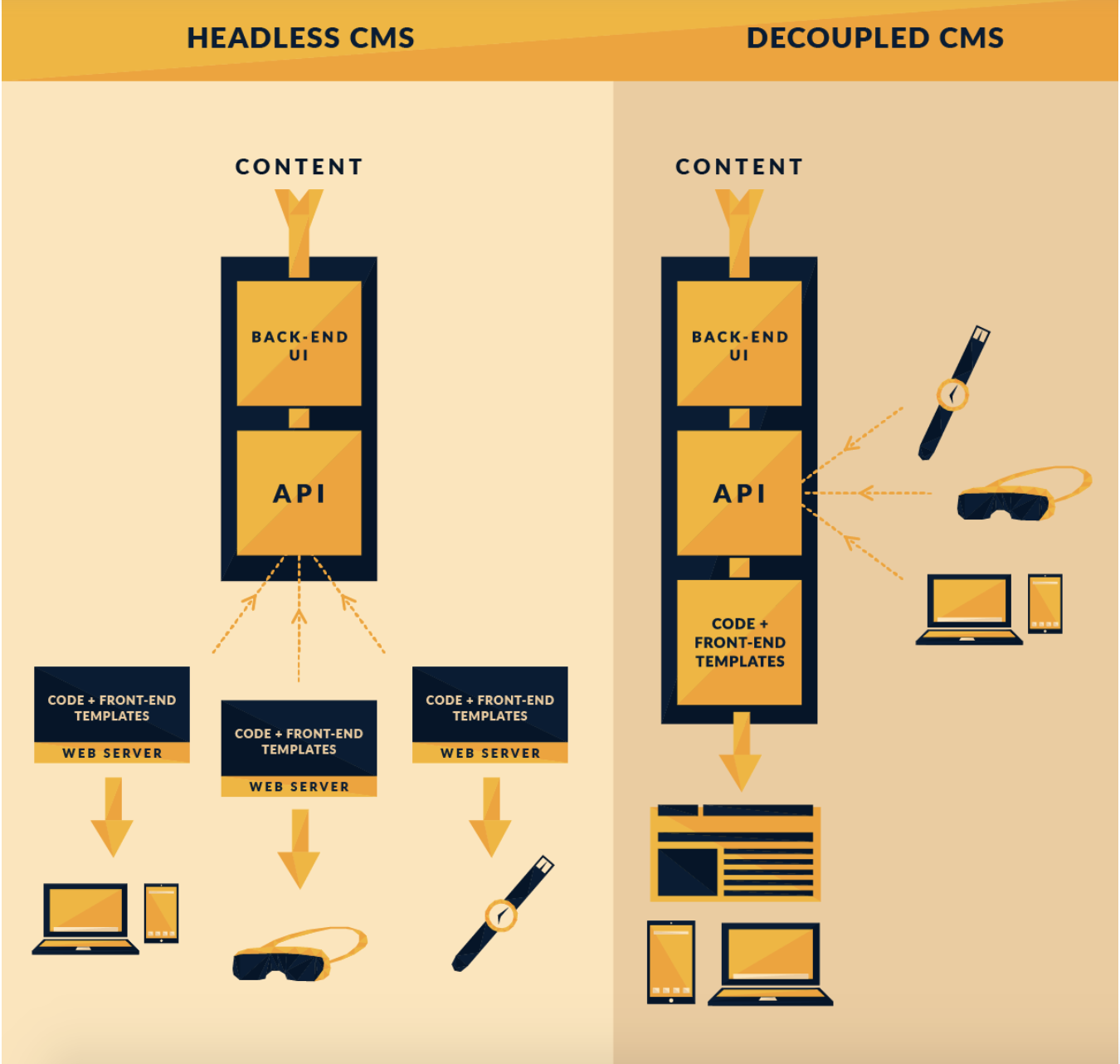Ultimate Guide to Headless CMS

What is a headless CMS?
If a traditional CMS was a body, the “head” would be the front-end components like the front-end framework and templating system. If you chop that head off, and you’re left with a headless CMS.
A headless platform has no default front-end system to determine how the content is presented to the end user. Instead, it’s front-end agnostic, meaning that your content is raw and can be published anywhere, through any framework.
By getting rid of the front-end delivery layer, your CMS is suddenly a content-only data source. It produces content and then sits there. Waiting.
What’s it waiting for? Well, because there is no default “head”, front-end developers are free to build as many heads as they like, for however many channels they want to serve content to (think websites, apps, kiosks, billboards, smartwatches, etc). To retrieve the content for each channel, the headless CMS responds to API calls.
Decoupled CMS
I consider headless content management to be a sub-set of decoupled content management. That’s because a decoupled CMS is headless, and then some.
With a decoupled CMS – also known as a hybrid headless CMS - your content is managed separately and is front-end agnostic, just like a headless CMS. Yet, it has front-end delivery tools in the box, like templates, if you want to use them.
The difference is that the back-end and front-end are not “coupled” to each other through a database like with a traditional CMS. Instead, the front-end and back-end communicate to each other through calls to an API.

Advantages of a headless CMS
1. Front-end agnostic
A headless or decoupled CMS is front-end framework agnostic. That means you can publish content on any device or channel via API calls. Plus, front-end developers are free to use their favorite frameworks and tools.
2. APIs
Application Programming Interfaces (APIs) enable two technologies to speak to each other. Both headless or decouples environments use APIs to connect and communicate with other softwares and channels, allowing for content delivery. But that’s not all. APIs can also be used to send data (like end-user activity and preferences) from those channels, devices, and touchpoints back to the CMS for processing, analysis, and re-distribution.
3. Future-proof
APIs aren’t just ready to talk to any existing software or device, they’re prepared to speak to any new device or channel that emerges in 2019 and beyond. Thus, your content will remain future-proof, no matter what innovative device next hits the market.
Disadvantages of a headless CMS
1. No fun for marketers
Robbed of WYSIWYG editing, blogging functionalities and other user-friendly features, marketers, in particular, are left out in the cold until their development team sees to their needs. This isn’t typically a problem for decoupled CMSs.
2. A fragmented tech stack
With a headless CMS, removing the ‘head’ simply means having to hunt for further technologies to replace it. This can entail building front-end solutions in-house, or deploying existing third-party tools to plug the gap. Either way, it could get costly both monetarily and through time spent—not to mention difficult to manage. This problem can be partially alleviated with a decoupled CMS, which will bring those marketer-friendly features right back.
3. No content previews
If you do manage to get your marketers back on track be drafting in third-party tools, they still won’t be able to efficiently use a headless CMS, as they won’t be able to easily preview content before it goes live.